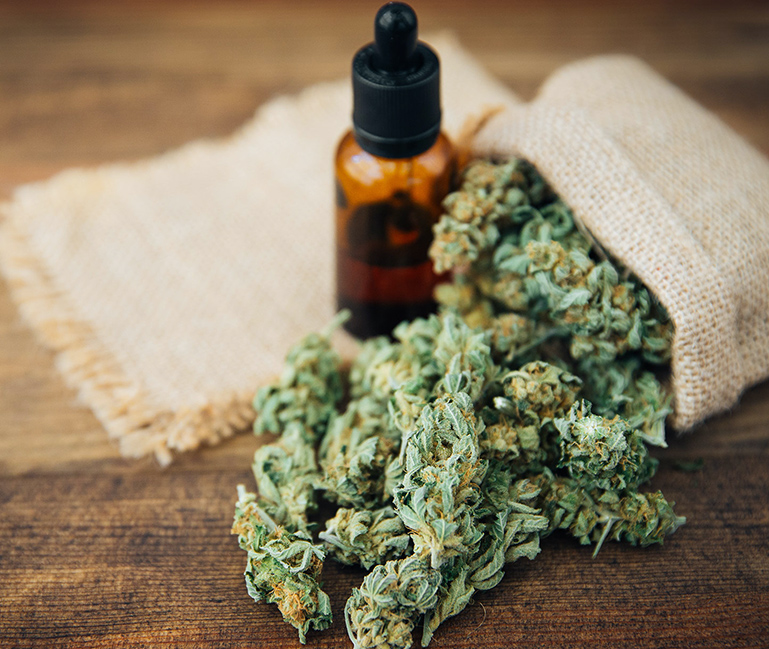The cannabis plant is one of the most (if not the most) pharmacologically active plants on the planet, containing over 400 active chemicals. The unique active components of cannabis are called cannabinoids, which are found alongside active chemicals called terpenoids (aka terpenes) and flavonoids. These chemical components work together to provide a wide variety of therapeutic benefits to the human body.
Cannabinoids are chemical compounds found in Cannabis plants. (marijuana and hemp) There are many cannabinoids, the most commonly studied and known are THC, (highly psychoactive) and CBD (non-psychoactive) however, there are other cannabinoids when put into proper use can pinpoint patient treatment. Our bodies have an endocannabinoid system. The two work together much like puzzle pieces. Simply put, when cannabinoids are ingested, they “connect” with the endocannabinoids naturally occurring in our bodies to create cellular harmony and stability.
Smell: Cannabis cultivated and cured to the highest standards typically exhibits a pungent and pleasant aroma. Flowers emitting a strong fragrance are commonly referred to as having a “dank” or “loud” odor, indicating the overall quality of the flower. There are a variety of terms for the types of aromas high-quality cannabis emits, including skunk, diesel, and pine. The common denominator is that a good-smelling flower is distinct, pungent, and unmistakable. The stronger the fragrance is, the more nuanced the experience is likely to be.
Look: High-end flower, like fresh, healthy produce, provides a few visual hints to help you determine its quality. While all good cannabis should be visually appealing, a top-shelf strain can easily display a vibrant array of colors. Good-quality flowers are often a deep green with flaming orange or red hairs. They can also express colors from deep purple to bright blue.

Terpenes are naturally occurring chemical compounds found in plants and some animals. They’re responsible for the aromas, flavors, and even colors associated with various types of vegetation. In terms of cannabis, terpenes are what make certain strains smell or taste different from others.
Many cannabis connoisseurs and budtenders say that consumers place far too much emphasis on THC content when choosing a strain. Instead, they recommend focusing more on certain terpene profiles to get their desired effects.
For example, preliminary research suggests that some terpenes could have potential benefits for certain mental health conditions, including anxiety, depression, and bipolar disorder.
Flavonoids are not unique to the cannabis plant. Scientists have identified thousands of them all throughout nature, from flowers to fruits and vegetables and they affect the color, smell, and flavor of a plant. However, there are some that are known to be found only within cannabis. These are known as cannaflavins.
In cannabis, cannaflavin A is pharmacologically active, with studies showing that it has anti-inflammatory properties that might be stronger than those found in Aspirin. Cannaflavin B and C are also being studied for their potential medical benefits. Other highly active flavonoids found in cannabis include Orientin, Quercetin, Silymarin, and Kaempferol, all with anti-inflammatory, anti-fungal, antioxidant, and anti-cancer potential–we’ll see where future studies take us.

Get updates about our company and related news about cannabis. Get exclusive access when we launch new products!